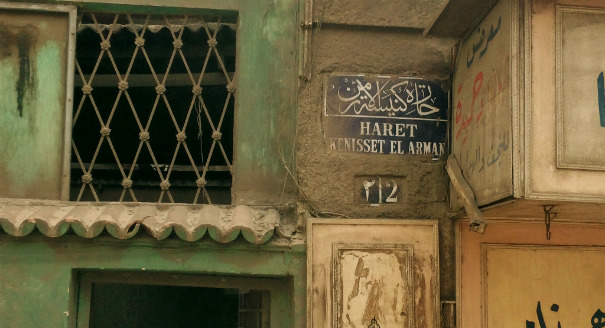














Egypt’s Armenian community today operates as a kind of state within a state. It provides services to its members in a country where social welfare is largely limited to government subsidies and attempts to preserve its identity with a network of clubs, schools, newspapers, benevolent organizations, and churches. But the Armenian population is drastically smaller today than its peak in the 1950s. Armenian institutions in Egypt are now challenged with keeping their community together as intermarriage becomes more common and Armenian youth are increasingly tempted by opportunities abroad.
In the years during and after the 1915 genocide, thousands of Armenians came to Egypt—where the Armenian General Benevolent Union (AGBU), founded in Cairo by a group of prominent Egyptian Armenians in 1906, set up a school for refugee children and provided other relief, social, and cultural services. In its early years, the AGBU was central to providing for the new arrivals and integrating them into the larger Armenian community. “Egyptian–Armenians have a long history of organizing things and founded this institution to work worldwide,” explained Viken Djizmedjian, AGBU’s Cairo chair since 2006.
Over the years, the Armenian community’s spirit of solidarity has helped to keep it organized and united. “We have a lot of institutions and it’s very important for us to keep Armenians together so each organization tries to do its part,” explained Djizmedjian. A 24-member Community Council is elected every eight years. They in turn elect an executive body every four years to run the Armenian Patriarchate’s institutions—including its schools, churches, cemeteries, real estate, and philanthropic endowments. Today AGBU Egypt supplements the meager services offered by the Egyptian state, providing educational grants, operating homes for the elderly, and offering medical, pension, and social welfare programs.
Armenians in Egypt are Egyptian citizens, carry Egyptian ID cards, and serve in the army, but they’re rarely involved in Egyptian political affairs. “Unlike Lebanon, for example, we don’t have parliamentary representatives, so to be active in Egyptian public life is really up to the individual,” Djizmedjian explained. The community’s numbers have dwindled, however, from a peak of 45,000 in the mid-20th century to between 5,000 and 7,000 today, according to Djizmedjian. Following Gamal Abdel Nasser’s economic nationalization programs in the 1960s, many Armenians, who tended to be self-employed and have their own businesses, left for Europe or the United States—and the country’s economic problems continue to tempt youth with opportunities abroad.
Until recently, there were three schools in Cairo catering to members of the Armenian community, but in 2013 dwindling enrollment meant that downtown Cairo’s historic Armenian school was forced to close its doors and merge with a nearby school in Heliopolis. About 150 students in grades K-12 now receive tuition-free education at the Kalousdian–Nubarian Armenian School, which has a 100 percent graduation rate, and growing numbers now come from families with Egyptian and Armenian parents, as intermarriages have become more common.
Most Armenians in Egypt still speak Armenian, in Armenian-owned businesses, or among students at church functions, and the language is seen as crucial to preserving their identity. “Language is a real concern for us as Armenians in the Middle East, which is why we also offer Armenian language courses as part of our AGBU virtual college,” Djizmedjian said. But downtown Cairo, once a nexus of Armenian life, is now home to only a small number of mostly aging Armenians and a few Armenian businesses. Much of the community has relocated to districts like Heliopolis, which has become the center of Armenian organizations. “Armenians have moved together with the city of Cairo,” explained architect and conservationist Nairy Hampikian, who restored two Armenian churches in central Cairo—the Armenian Catholic Cathedral, known as the Church of the Assumption and built in 1926, serves a small, but steadfast community of Armenian Catholics downtown, and the Armenian Orthodox Cathedral, which was built in 1924, still flies the Egyptian and Armenian flags side-by-side in the historic Faggala neighborhood.
“The revolution has made us belong to this place,” Hampikian said, noting that as an architect, success depends on a team of Egyptians working with her. “A community is a privilege, but it can also be a bubble, so we should get involved in whatever Egypt is going through and not hide ourselves from the situation around us,” she emphasized.



.jpg)


